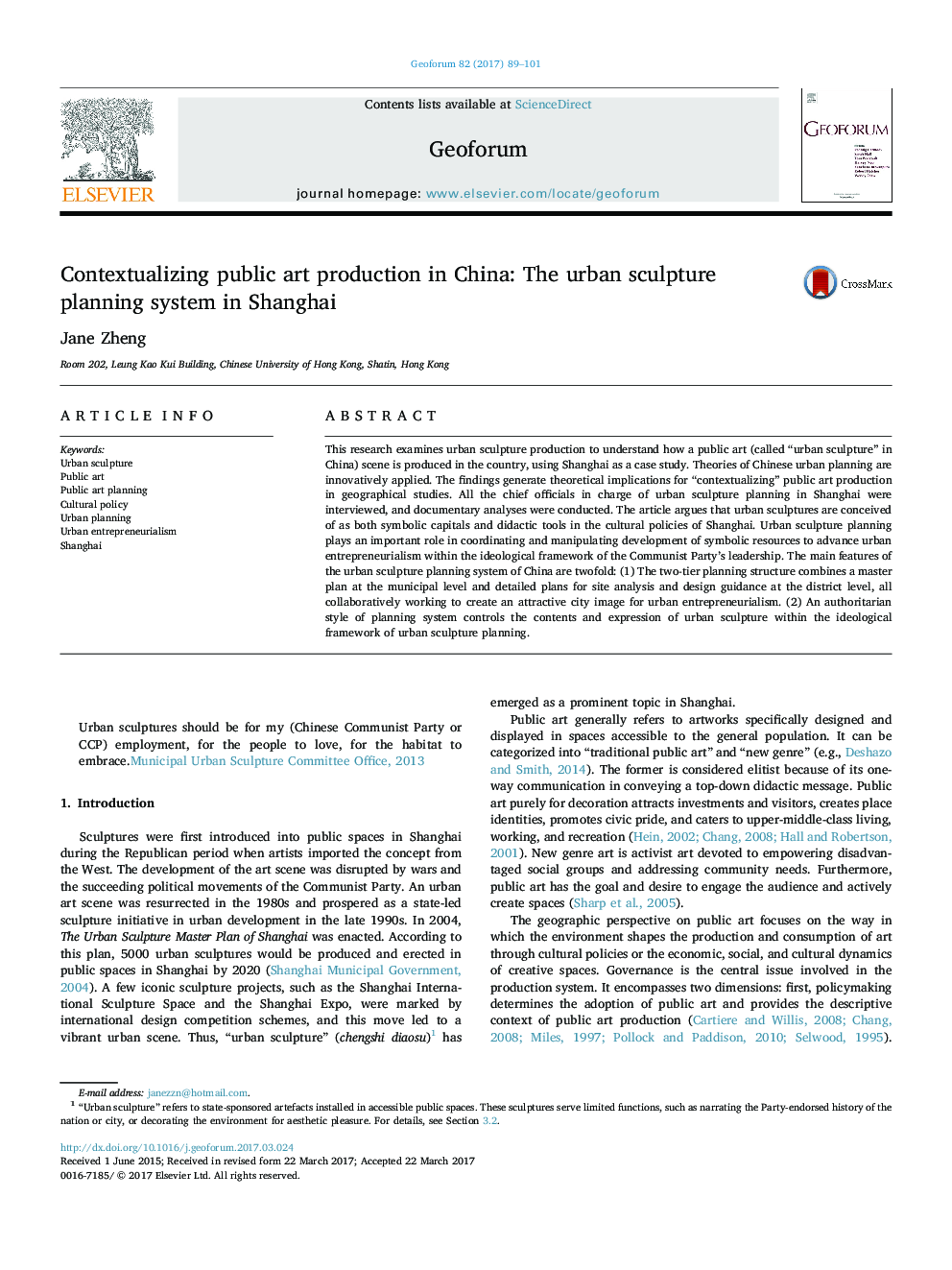| Article ID | Journal | Published Year | Pages | File Type |
|---|---|---|---|---|
| 5073322 | Geoforum | 2017 | 13 Pages |
Abstract
This research examines urban sculpture production to understand how a public art (called “urban sculpture” in China) scene is produced in the country, using Shanghai as a case study. Theories of Chinese urban planning are innovatively applied. The findings generate theoretical implications for “contextualizing” public art production in geographical studies. All the chief officials in charge of urban sculpture planning in Shanghai were interviewed, and documentary analyses were conducted. The article argues that urban sculptures are conceived of as both symbolic capitals and didactic tools in the cultural policies of Shanghai. Urban sculpture planning plays an important role in coordinating and manipulating development of symbolic resources to advance urban entrepreneurialism within the ideological framework of the Communist Party's leadership. The main features of the urban sculpture planning system of China are twofold: (1) The two-tier planning structure combines a master plan at the municipal level and detailed plans for site analysis and design guidance at the district level, all collaboratively working to create an attractive city image for urban entrepreneurialism. (2) An authoritarian style of planning system controls the contents and expression of urban sculpture within the ideological framework of urban sculpture planning.
Related Topics
Social Sciences and Humanities
Economics, Econometrics and Finance
Economics and Econometrics
Authors
Jane Zheng,
